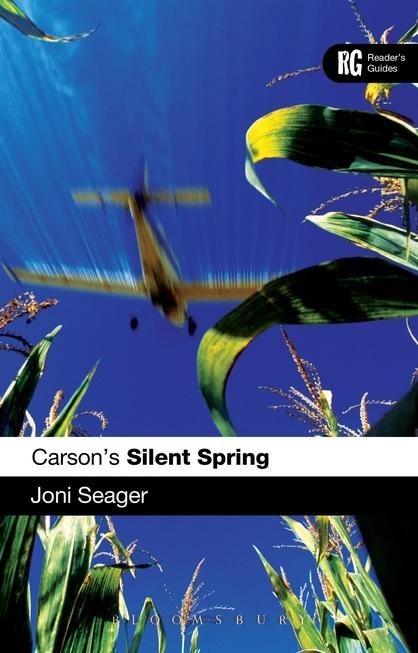Seager, Joni. Carson’s Silent Spring: A Reader’s Guide. New York: Bloomsbury Publishing, 2014.
Rachel Carson’s 1962 book is widely credited with launching the modern environmental movement, catalyzing the ban on DDT and cognate pesticides, providing the foundation for radical public health movements, and framing the first sustained critique of the threats posed by the chemical age.
Typically, Silent Spring is described as a book about the dangers of pesticides. Which it is. But because of the dominance of the pesticides narrative, the astonishingly wide and remarkably radical social critique that Carson launched is often overlooked. Carson’s book is much more than an expose of the dangers of pesticides. At its heart, Silent Spring is a manifesto against the ways that “progress” was defined through the militarized and masculinized infatuation with chemical control of nature.
In Silent Spring, Carson raises a much broader challenge to the modernist values emerging in post-WWII America. Decades before political economy analyses became familiar grist for the environmental mill, Carson sounds a truly radical warning when she warns of the dangers of a public policy and science agenda driven by the pursuit of profit. Carson prefigures explicitly feminist analyses that would emerge in the three decades following her book, including her critique of the masculini zed “control” of nature that is a stepping-stone for later feminist analyses.
Carson embraced a subjective engagement with nature and, as a scientist, didn’t back away from talking about the importance of humility and a sense of wonder and attachment. She lays the groundwork for what would become the “precautionary principle.” The wildly misogynist attacks on Carson also prefigure what has now become a standard operating procedure to undercut women who step ‘out of place.’ (Text from Joni Seager. All rights reserved.)


